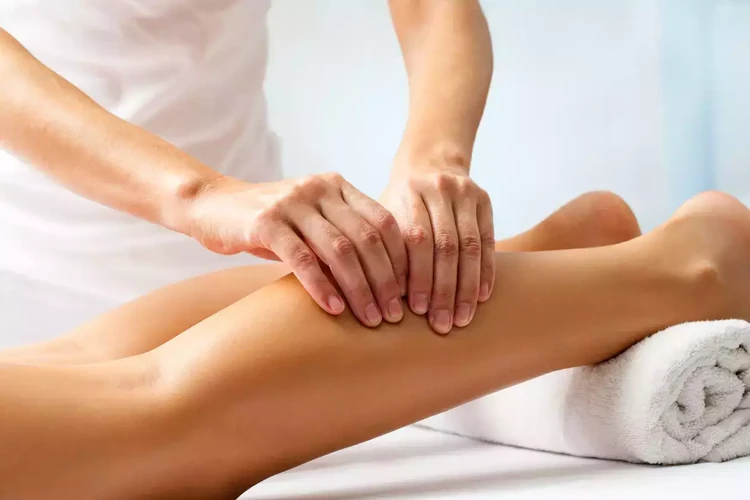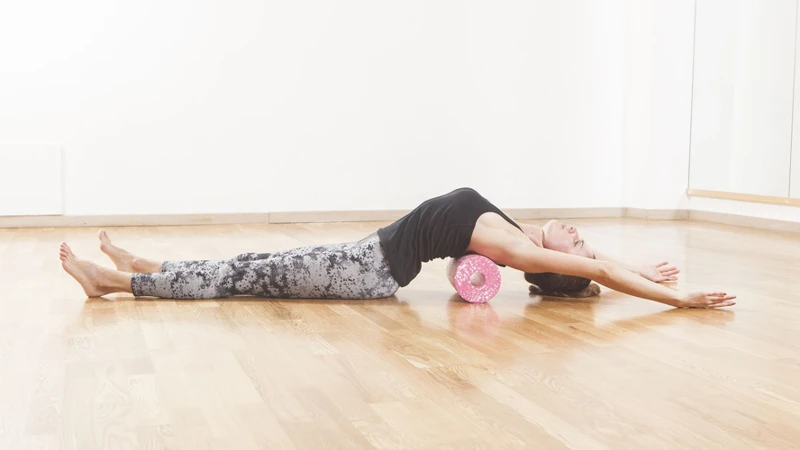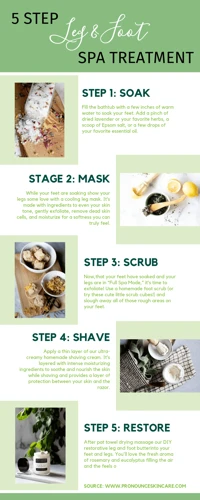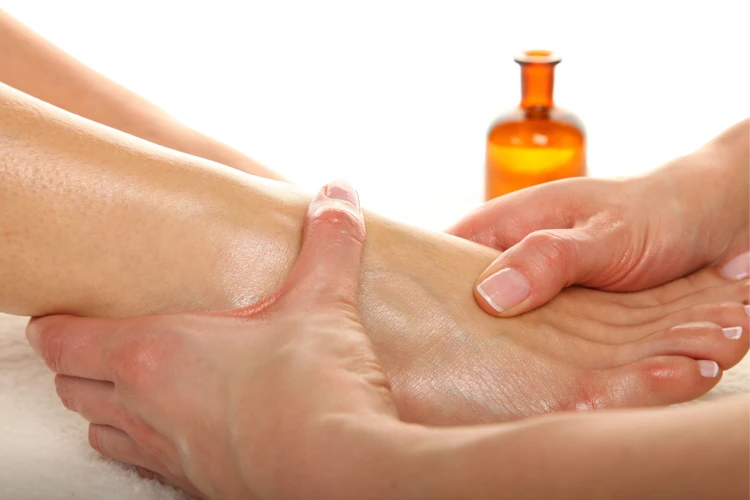Are you looking for ways to give yourself a perfect leg massage? If so, you’ve come to the right place! This article will provide you with 5 easy steps on how to massage your legs. By following these steps, you can give yourself a relaxing and therapeutic leg massage that will help you reduce stress and muscle tension. So, let’s get started and learn how to give yourself the perfect leg massage!
Contents
Benefits of Leg Massage

- Relieves Muscle Tension – Leg massage helps to relax the muscles and relieve stress, which can reduce soreness, stiffness, and fatigue.
- Improves Blood Circulation – Leg massage helps increase blood circulation to the legs, which can improve overall energy levels, reduce swelling, and reduce the risk of developing varicose veins.
- Improves Mobility – Leg massage can help improve the range of motion of the legs, which can make daily activities easier and help with overall mobility.
- Reduces Stress – Leg massage can help reduce stress and anxiety, which can help improve overall mental health.
Leg massage is a great way to relax and alleviate tension, improve circulation, and reduce stress. With a few simple steps, you can give yourself a leg massage in the comfort of your own home.
Preparation Tips for Self-Massage

| Preparation Tips | How To Massage A Leg |
|---|---|
| Choose a comfortable place | Choose a comfortable, quiet place with enough space to move around freely. |
| Gather your supplies | Gather a massage oil or lotion, a massage table or chair, and a few towels. |
| Warm up the area | Warm up the area with a heating pad or hot water bottle to relax the muscles. |
| Choose your music | Choose some soothing music to help you relax and focus on the massage. |
| Remove jewelry | Remove any jewelry that could interfere with the massage. |
| Undress | Undress as much as you feel comfortable with, and cover up with a sheet or towel. |
| Relax | Relax your mind and body before beginning the massage. |
Once you have prepared the area, you are ready to start your self-massage.
Step-by-Step Guide to Leg Massage

Massage the Front of the Legs
Start at the top of the thigh and apply pressure with your fingers in a circular motion. Move down to the knee, circling around it and up the back of the thigh. Keep the pressure light and even, working your way back up the thigh and repeating the motion.
Massage the Back of the Legs
Using your fingers, start at the top of the thigh and massage in circular motions. Work your way down to the knee, using the same circular motion. Make sure to keep the pressure even and light.
Massage the Upper Thighs
Using your thumbs, massage the inner and outer thighs. Use a circular motion, starting at the top and working your way down. Make sure to keep the pressure light and even.
Massage the Lower Thighs
Starting at the knee, use your fingers to massage in circular motions. Move up the thigh, applying pressure with your fingers. Keep the pressure light and even.
Massage the Calves
To massage sore thighs, start at the ankle and use your thumbs to massage in circular motions. Work your way up the calf, applying pressure with your thumbs. Keep the pressure light and even.
Tips for Massaging Specific Leg Areas
Massaging Sore Muscles
Gently kneading the muscles of your thighs can help reduce stiffness and tension. Start by lightly cupping your hands around your thigh, then move them in small, circular motions, applying light pressure as you go. This can help to warm up the area and encourage the muscles to relax.
Massaging Leg Pain
If you have any leg pain, focus on the area that is causing the most discomfort. Rub the area in a circular motion, then press down and hold for a few seconds before releasing. This can help to break up any tension in the area and potentially provide relief. If the pain persists, it is important to visit a physician for further assessment and treatment.
How to Massage Your Thighs Yourself
To massage your thighs yourself, start by applying some massage oil or lotion to the area. This will help to reduce friction and facilitate a smoother massage. Use your thumbs to press into the muscles, applying light pressure in a circular or up-and-down motion. Move slowly and steadily around the area, focusing on any areas that feel particularly tense. When you’re finished, use a warm towel to wipe off any excess oil.
Frequency of Leg Massage

How often should you give yourself a leg massage?
- For general purposes, aim for a leg massage 1-2 times a week.
- If you experience tightness, soreness, or spasms, increase the frequency.
- If you are an athlete, get a leg massage at least 3 times a week.
- If you have an injury, consult a health care professional for an individualized plan.
Leg massage is a great way to relax, reduce stress, and help with muscle recovery. By including regular leg massage into your self-care routine, you can improve your overall well-being. So, make sure to give yourself a leg massage to reap the numerous benefits of self-massage.
Self-Care Tips for After the Massage
Hydrate: It is important to drink plenty of water after a massage to help flush out toxins that have been released from the muscles.
Rest: Allow yourself time to rest after the massage. This will allow the body to fully absorb the benefits of the massage.
Stretch: After the massage, gently stretch the muscles that were worked on. This will help the body to remember the new muscle patterns that were created during the massage.
Stay Active: Staying active will help the body to continue to release toxins and increase the benefits of the massage.
Ice or Heat: Depending on the type of massage, you may want to apply either heat or ice to the area that was worked on. Heat will help to relax the muscles, while ice can reduce inflammation and swelling.
Practice Self-Massage: Regularly performing how to self massage leg muscles can help you to maintain the benefits of the massage. Try using a foam roller or tennis ball to massage the area that was worked on during the massage session.
Frequently Asked Questions
Is Giving Yourself a Leg Massage Beneficial?
Yes! Giving yourself a leg massage is a wonderful way to relax and relieve tension in the muscles, improve circulation, and help to reduce pain and swelling. Here are some of the benefits:
- Reduces muscle tension and stress.
- Improves circulation.
- Relieves pain and swelling.
- Improves flexibility and range of motion.
- Promotes relaxation.
Massaging your legs can also help to reduce fatigue, improve posture, and improve your overall health. Massages can help to reduce lactic acid build-up in the muscles, which can lead to improved performance and reduce the risk of injury.
Are there any precautions I should take before giving myself a leg massage?
Yes, here are the most important precautions you should take before giving yourself a leg massage:
- Do a skin test. Before giving yourself a leg massage, test a small area of your skin, like your inner arm, to make sure you do not have any adverse reactions to the massage oil or cream.
- Check for any underlying medical issues. Before giving yourself a leg massage, check with your doctor to make sure you do not have any underlying medical issues that could be affected by a massage.
- Warm up your leg muscles. Before giving yourself a leg massage, it is important to warm up your leg muscles by doing some light stretching and/or a short walk.
- Do not overdo it. When giving yourself a leg massage, it is important to be gentle and to not overdo it. Too much pressure can cause damage to your muscles and skin.
- Relax. The last, and possibly most important, precaution to take before giving yourself a leg massage is to relax. Taking a few deep breaths before starting can help you get into the right mindset.
Following these precautions can help ensure that you give yourself the perfect leg massage.
What Type of Massage Technique Should I Use for My Legs?
For the perfect leg massage, there are several massage techniques that can be used, such as kneading, stroking, and rubbing. Kneading involves pressing, squeezing, and lifting the muscles, while stroking is a gentler massage technique that involves long, gentle movements. Rubbing involves circular movements and is great for relieving muscle tension. Experiment with different techniques to find the one that works best for you.
Are there any specific areas I should focus on during the massage?
Yes! When giving yourself a leg massage, there are several key areas you should focus on:
- Calves: Massage your calves in a circular motion, working your way up and down.
- Hamstrings: Massage your hamstrings from the knee towards the hip in a kneading motion.
- Quadriceps: Use your thumbs to massage your quadriceps in a circular motion.
- Feet: Massage the soles of your feet and toes with your thumbs, paying extra attention to the arch of your foot.
Remember to apply the right amount of pressure and to be gentle, as the area can be sensitive.
How Often Should I Give Myself a Leg Massage?
The frequency of leg massages depends on the individual. Generally, it is recommended to give yourself a leg massage every few days or once a week. If you have a specific muscular issue, such as a sore area, you should massage it more frequently to help reduce pain and inflammation. Additionally, if you are an active individual and have tight muscles, regular massages can help reduce tension.
Conclusion
Leg massage is an easy and effective way to relax and relieve tension. Following the five simple steps provided will ensure that you give yourself the perfect leg massage. With regular practice, you can enjoy the benefits of a leg massage and feel relaxed, energized, and ready to take on the day.

